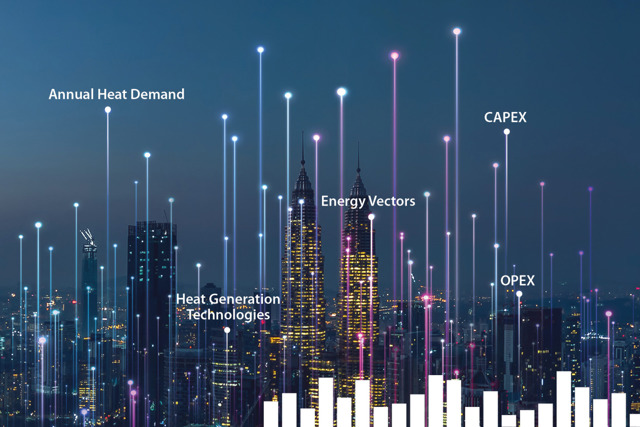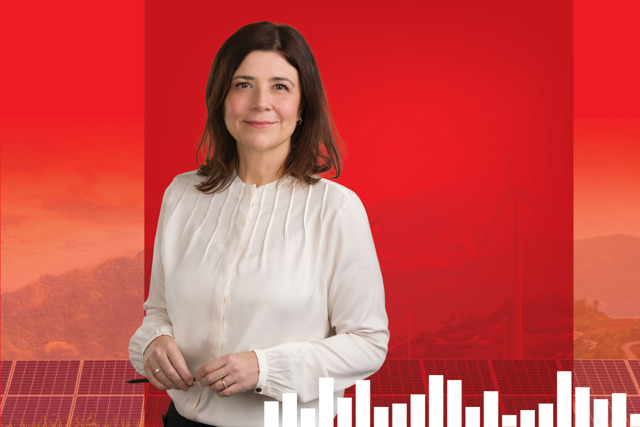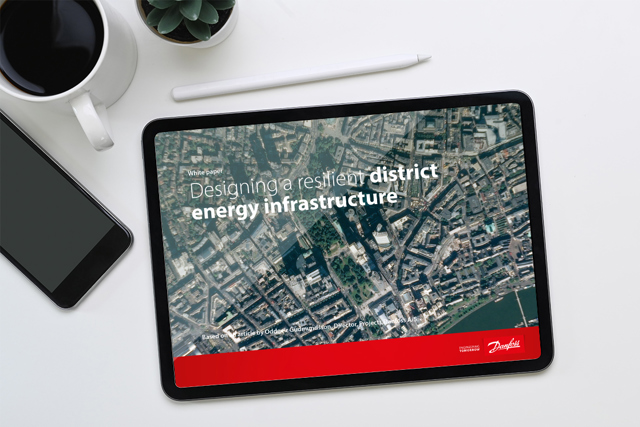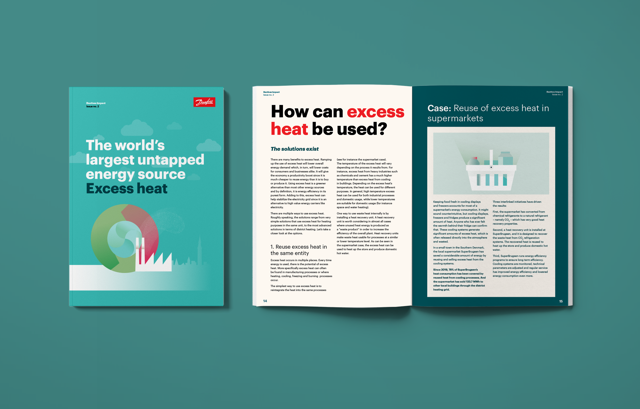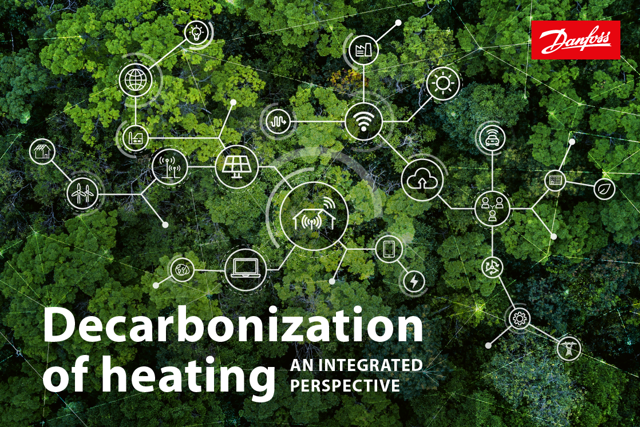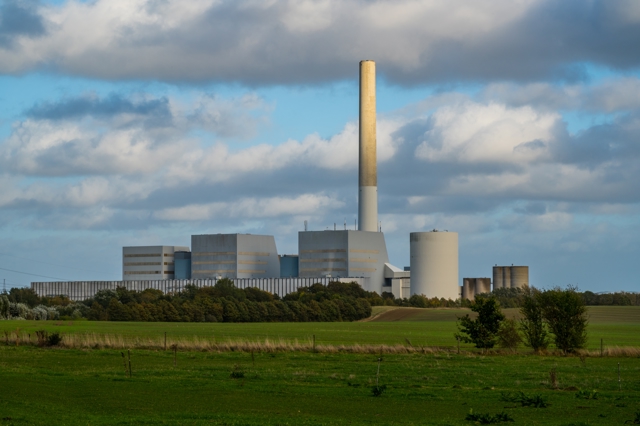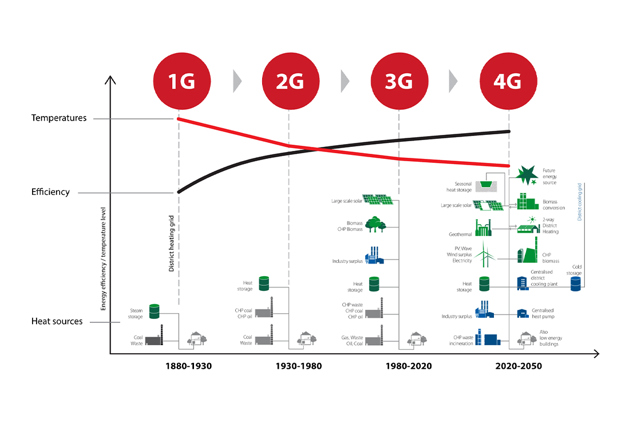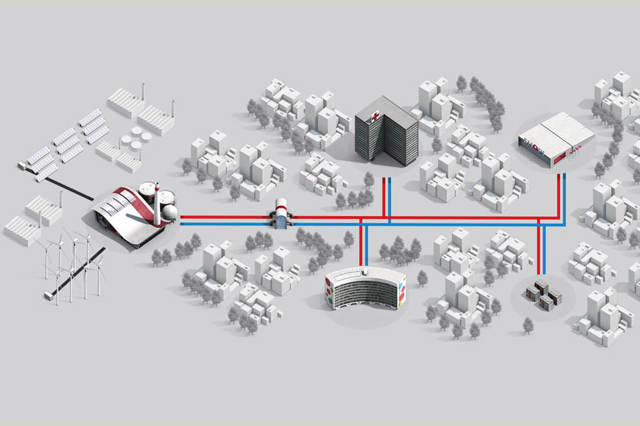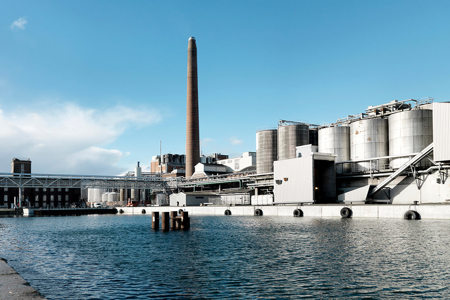
Use of district heating equals higher energy efficiency and individual comfort
If you are part of a public utility or responsible for designing or delivering district heating, Danfoss can offer years of experience and in-depth knowledge of 4G district energy and a number of products and services that can maximize your district heating’s potential.
Beyond our substantial technical expertise, we realize that today’s district heating utilities are doing more than just supplying heating and cooling to the end-user. You are influencing and operating according to political energy targets and available technologies. Danfoss can show you how district heating utilities play a critical role in lowering CO2 emissions and optimizing energy consumption in cities.
Why district energy with Danfoss?
We believe that district energy is the most sustainable approach for mitigation of climate changes and improving energy efficiency by providing optimization solutions and optimal temperature control for both demand and supply side.
Trends in district energy sector are moving:
- From single source to multi-source
- From fossil to renewables and surplus energy
- From high temperature to low temperature district heating
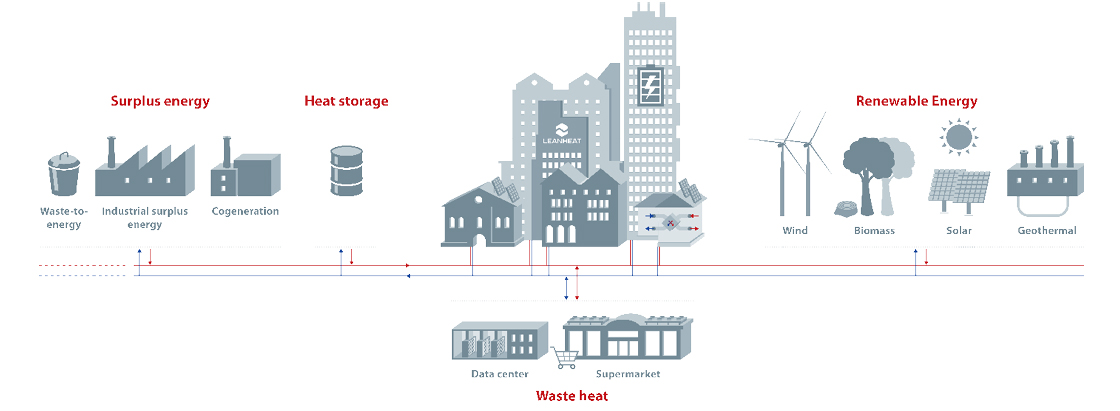
Addressing main challenges in district energy
1. ∆T Optimization
Hydronically unbalanced systems result in high flow and high return temperatures. ∆T directly impacts heat production cost and efficiency, distribution network cost and efficiency. Challenge in district energy is how to maximize network and production efficiency while providing best quality of supply.
2. Optimal network design
Water & heat losses, shift of critical points in network, extensions of the network and many other factors cause high cost of production due to poor planning. Challenge in district energy is how to minimize investment cost and maximize consumption density making optimal network dimensioning and economically prioritized investments.
3. Decentralization – increased fuel complexity
Decentralization and increased fuel complexity make integration and forecasting much more difficult. Challenge in district energy is how to maximize utilization of production sources with best economy and efficiently manage complex networks while still improving utilization of various heat sources with best economy investments.
Production of heat from renewables can be prioritized and better controlled, helping the utility to be spot on (or above) the target.
4. Requirement to energy savings
Regulative for energy savings demands yearly energy savings and clear documentation proving those. Challenge in district energy is how to achieve end-user energy savings target and invest to secondary heating side to improve efficiency of the primary side. Goal is to make smart investments.
5. Peak energy demand
Peak heat load and expensive peak fuels stretch DHU resources and make heating more expensive for both DHUs & end users. It has also a high effect on CAPEX as well as OPEX. Challenge in district energy is how to lower the effect of peak energy demand on network operation costs and cover peak demand with regular heat sources while lowering investment and operating costs.
How we can help you
Product portfolio for district heating and cooling applications in networks and buildings
Consultancy and customer dedication
Innovation, technical optimization and performance
Safety and reliability in cooperation
Global reach with strong local representation and know-how
One experienced partner for optimal plant operation, optimal network operation and delivering perfect service to your customers
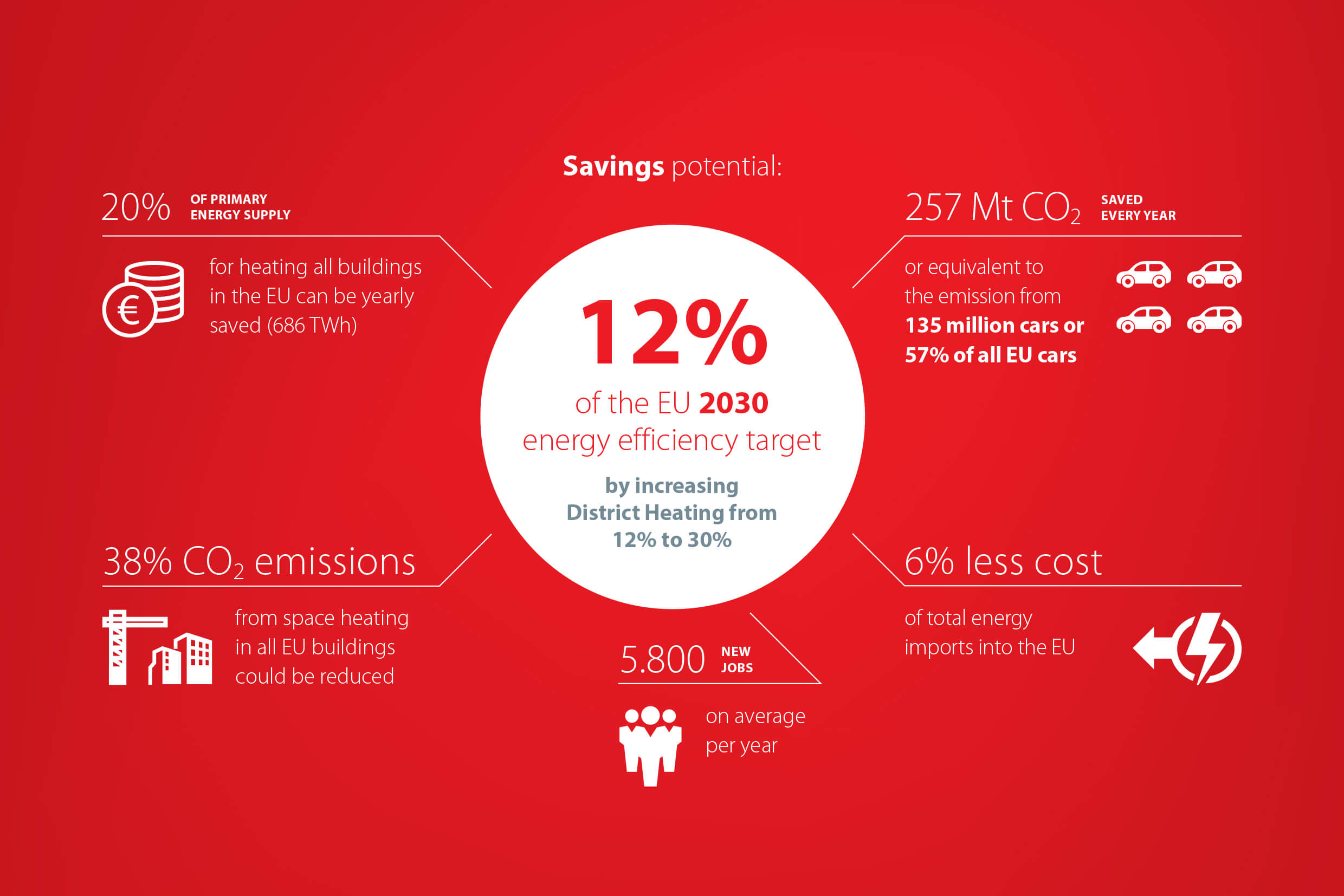
Articles
Unlock in-depth knowledge and inspiration

Turn your waste heat into financial gains and lower emissions
Unlock the value of waste heat and optimize energy use with sector coupling. Discover how combining heating and cooling systems can cut costs, reduce emissions, and support your sustainability goals.

Decarbonization with integrated cooling and heating energy systems and heat recovery
Join Drew Turner as he breaks down the art of merging diverse energy sectors to boost efficiency and drive decarbonization efforts. Learn about the innovative, yet practical ways to harness this strategy, like repurposing excess heat from cooling systems for heating needs elsewhere. You’ll also discover the potential of integrating renewable energy sources into the power grid, while addressing the challenge of supply-demand equilibrium.
Trends driving district energy
The shift in the district energy sector from single source to multi-source, from fossil fuels to renewables and surplus energy, and from high temperature to low temperature district heating, brings with it several key challenges.
Danfoss end-to-end district energy solutions deliver actionable insights enabling continuous optimization and optimal temperature control on both demand and supply side.
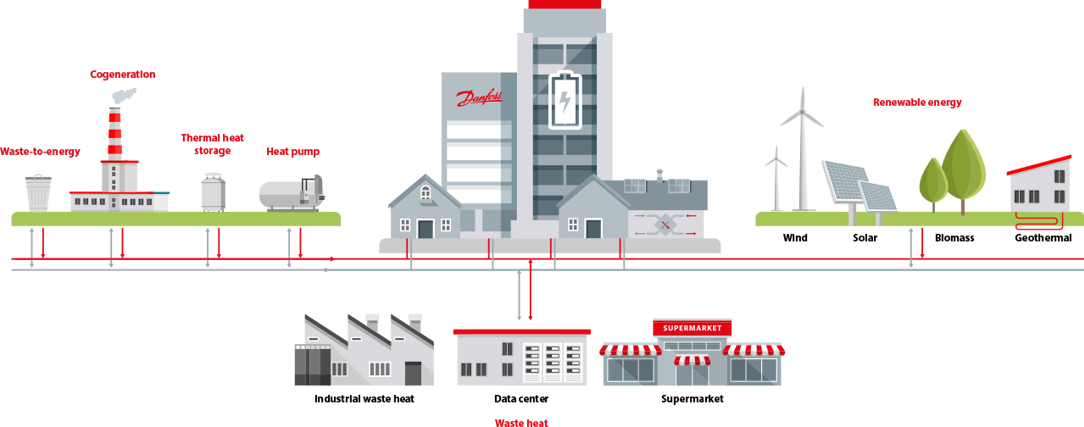

Sector coupling: smart energy videocasts
Introducing the smart side of the energy system using sector coupling to connect the different energy sectors. This setup can support decarbonizing the energy supply and fight against climate change.
We also encourage you to watch our case specific videos from Copenhagen and Sonderborg on how small- and large-scale district heating systems play an integral part of sector coupling.

Re-engineering energy efficiency: Heat networks explored
District energy networks can make a huge impact on the road to decarbonization. Find out why – and how the Danfoss HQ walks the talk – in this podcast with Jonas Loholm Hamann, Head of Business Development for Danfoss District Energy.
End-to-end optimization
Addressing main challenges in district energy

Uncover the potential of district heating
Increasing the share of Europe’s heat demand covered by district heating will boost both savings and energy efficiency. Check out our infographic to explore the potential in district heating systems.
How we can help you
Product portfolio for district heating and cooling applications in networks and buildings
Consultancy and customer dedication
Innovation, technical optimization and performance
Safety and reliability in cooperation
Global reach with strong local representation and know-how
One experienced partner for optimal plant operation, optimal network operation and delivering perfect service to your customers
Videos
Learning
News
Contact us

To learn more about district cooling solutions for your project please contact your local district energy expert.


